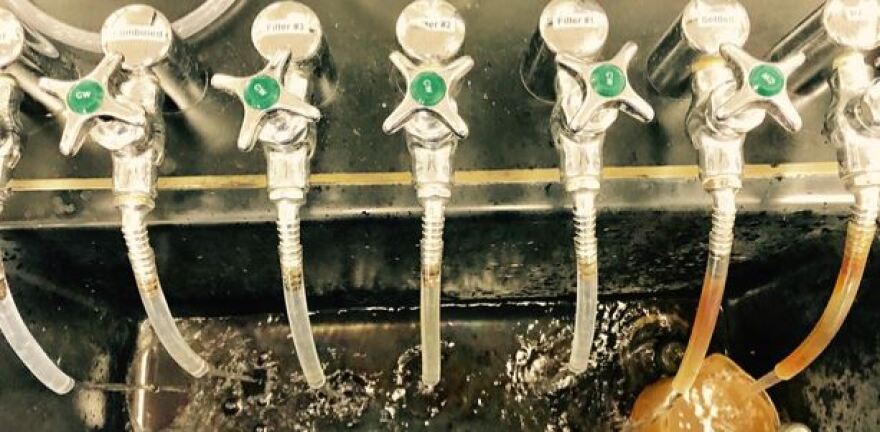Ohio will begin testing some public and private water systems for the presence of toxic nonstick, fluorinated chemicals, broadly called PFAS.
In a press release issued Friday, Ohio Gov. Mike DeWine announced the state’s environmental and public health agencies will analyze drinking water systems located near places with known contamination. That includes near firefighting training sites and some manufacturing facilities.
Wikimedia Commons
Initial testing shows potential PFAS contamination.
PFAS chemicals were used in flame-retardant foam sprays and in the manufacture of nonstick and stain-resistant products.
“Right now, we just don’t know if these chemicals have a widespread presence in Ohio’s water supply or not, and I’ve asked the directors of both the Ohio EPA and Ohio Department of Health to develop a plan to find out,” DeWine said. “This is important for both the protection of our natural resources and for public health, which is why we must more fully evaluate the prevalence of PFAS in our water.”
'Forever Chemicals'
Two per- and polyfluoroalkyl chemicals — PFOA and PFOS — have been linked to negative health effects. A medical study of more than 70,000 people exposed to PFOA, or C8, dumped by DuPont’s Washington Works plant near Parkersburg, West Virginia, linked exposure to the chemical with multiple health problems from cancer to reduced immune function.
The so-called “forever chemicals” persist in the environment and have been found in numerous water systems in the Ohio Valley.
Under DeWine’s order, the Ohio EPA and ODH have until Dec. 1 to develop an “action plan.” According to the release, the plan will contain a response strategy for working with communities and private well owners if “high levels” of PFAS chemicals are found.
Dan Tierney, press secretary for DeWine, said more details on where testing will occur, what chemicals will be included and what constitutes “high levels” of contamination will be determined by Ohio EPA and ODH. The agencies have also been asked to monitor new research and developments in the science, he said.
The U.S. EPA is currently evaluating if and how best to regulate PFAS chemicals. The agency has received criticism from some federal lawmakers for not moving fast enough. The agency in 2016 set a health advisory level of 70 parts per trillion for PFOA and PFOS in drinking water, however a report from the federal government’s Agency for Toxic Substances and Disease Registry (ATSDR), found the chemicals can endanger human health at levels many times lower than that.
Alexandra Kanik | Ohio Valley ReSource
Explore your region’s water supplies now >>
Some states have gone further. New York, New Jersey, and Vermont, among others, have adopted drinking water standards for some PFAS chemicals lower than the EPA. In recognition of the widespread contamination of PFAS chemicals, some states, including Michigan, have conducted statewide testing.
Sampling of more than 1,700 public water systems in Michigan showed 90 percent of systems were not contaminated. Seven percent had PFAS below 10 ppt and three percent had levels between 10-70 ppt. Two systems exceeded EPA’s 70 ppt health advisory.
An analysis by the Environmental Working Group suggests up to 110 million Americans could have PFAS in their water. EWG reanalyzed data from private firm Eurofins Eaton Analytical, which conducted water sampling for the EPA’s third Unregulated Contaminant Monitoring Rule, or UCMR.
While contamination levels measured between 10-90 ppt were reported, the Eurofins data showed 28 percent of the water utilities it tested contained PFAS chemicals at concentrations at or above 5 ppt. The percentage of samples with PFAS detections nearly doubled when the laboratory analyzed down to 2.5 ppt, according to EWG.







